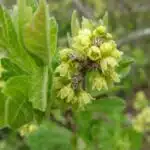The orange jasmine, also known as Murraya paniculata, is a flowering shrub that provides beauty, fragrance, and year-round interest to any garden. A gardener’s dream come true, this plant offers an array of delightful characteristics with minimal maintenance. With proper planting and care techniques, you can create a fragrant oasis in your own backyard.
As a specialist in botany and gardening, I am here to provide you with all the tips and tricks needed to successfully cultivate an orange jasmine bush in your outdoor space. From proper pruning to pest control methods, my advice will help you achieve a stunningly beautiful landscape that is sure to draw admiring glances from neighbors and friends alike!
To get started on your orange jasmine journey it is important to understand the unique needs of this plant. In this article I will discuss how to properly plant and maintain an orange jasmine bush so that it thrives for years to come. You’ll learn about the best soil type for optimal growth; when and how often to water; fertilizing requirements; when and how much pruning should be done; as well as how to spot common pests or diseases. By following these simple guidelines you’ll enjoy the beauty of an orange jasmine bush for many years!
Overview Of Orange Jasmine
Orange jasmine (Murraya paniculata) is an evergreen shrub native to India and Southeast Asia. It is popularly grown for its fragrant white flowers, which bloom in winter or early spring. The foliage of orange jasmine is a glossy green color with a delicate texture, making it an attractive landscape addition. Its ability to tolerate cold temperatures makes it suitable for growing in many parts of the world.
When selecting a planting site for orange jasmine, consider the climate, soil type, and available sunlight. Orange jasmine grows best in areas where temperatures rarely dip below 10°F (-12°C). It requires well-drained soil that is slightly acidic with a pH of around 6.5 to 7.5; if necessary, add organic matter or sand to improve drainage and aeration. In terms of light requirements, orange jasmine needs full sun to partial shade exposure depending on your local climate and season.
When it comes to watering and fertilizing orange jasmine, make sure not to overwater or overfertilize as both can lead to leaf drop or other negative effects on the plant’s health. Water regularly during dry periods but don’t allow the soil to become soggy; mulching helps keep the roots cool and moist while also suppressing weed growth. As far as feeding goes, use a balanced fertilizer every three months during growing season; this will help provide essential nutrients for healthy growth and flowering.
With proper care, you can enjoy years of vibrant blooms from your orange jasmine plant! Next step: selecting a planting site for orange jasmine that suits your local climate and soil conditions for optimal growth.
Selecting A Planting Site For Orange Jasmine
Choosing a suitable spot to plant your orange jasmine is critical to its success. The right site will provide the perfect environment for this beautiful and fragrant flowering shrub to thrive. With careful consideration and some knowledge of the flower’s needs, you can make sure your orange jasmine finds its ideal home.
When selecting where to plant your orange jasmine, there are a few key points you must keep in mind:
- Exposure: Orange jasmines prefer full sun, but will tolerate partial shade.
- Soil: Well-draining soil with plenty of organic matter is essential for optimal growth.
- Moisture: Water regularly during dry spells or when temperatures rise above 80°F (26°C).
- Wind protection: Shield your plants from strong winds that can damage the foliage and flowers.
Positively impacting the environment begins with being mindful of the conditions necessary for success when gardening. By making sure your orange jasmine has everything it needs to flourish, you’re setting it up for many years of enjoyment in your garden. This is how we show our care for nature and help create a better world for generations to come.
Planting Orange Jasmine
When planting orange jasmine, it’s important to consider the plant’s growth habit. Orange jasmine is an evergreen shrub that grows in a vase-shaped form and can reach up to 6 feet tall and 4 feet wide. It prefers full sun but will tolerate some shade, and it’s important to find a spot that gives it enough protection from strong winds. Additionally, the soil should be well-draining and rich in organic matter for optimal health.
Once you’ve chosen your planting site, prepare the soil by loosening it up with a shovel or tiller so that the roots of your orange jasmine can spread easily. If needed, add compost or fertilizer to improve the soil’s nutrient quality and water retention capabilities. Dig a hole twice as wide as the root system of your orange jasmine, then place the plant inside and fill in around it with soil. Water thoroughly after planting to help settle the roots.
Finally, mulch around your new plant with a 2-3 inch layer of organic mulch such as wood chips or shredded bark. This will help keep the soil cool and moist while also helping reduce weeds – essential components for successful growth of your orange jasmine! With these steps completed, you’ll be on your way to growing beautiful orange jasmines in no time!
Watering And Fertilizing Orange Jasmine
Watering and fertilizing an orange jasmine is akin to giving a gift – with the right amount of nourishment, it will reward you with blooms of fragrant flowers. As any gardener knows, this delicate balance is essential for a healthy plant. Using the right amount of water and fertilizer can be tricky, but when done correctly, your orange jasmine will thrive.
When it comes to watering, the most important factor is consistency. Water your orange jasmine deeply every week or two – enough so that the soil is moist throughout the root zone. If you’re unsure how much water to give your orange jasmine, try using a moisture meter or simply feel the soil; if it’s still damp from a previous watering, wait a few days before giving it more.
Fertilizing your orange jasmine is also important for its health, but be sure not to overdo it. Fertilize once or twice during the growing season (spring and summer) with a balanced fertilizer such as 10-10-10. Add the fertilizer to the soil away from the roots and then water immediately afterwards to help prevent burning. With proper care and attention, your orange jasmine will reward you with beautiful blooms all season long!
Pruning Orange Jasmine
The delicate fragrances of orange jasmine fill the air with a heavenly aroma, but what’s the best way to manage this delicate plant? Pruning is an important part of caring for these plants in order to keep them healthy and looking beautiful. Here are 4 tips to help you get started on pruning your orange jasmine:
Prune your orange jasmine lightly and often. This will help promote new growth and prevent excessive damage from occurring. It’s also important to remove any dead or diseased branches as soon as possible.
When pruning, use sharp scissors or shears to make clean cuts at the branch ends. This will help ensure that there aren’t any jagged edges that can become infected by pests or diseases.
Try to prune your orange jasmine during its dormant period, which usually occurs in late winter or early spring. This will help reduce stress on the plant and promote better flowering in the future.
Don’t be afraid to prune aggressively if needed; it won’t hurt the plant if done correctly! Just be sure not to remove more than 20-30 percent of the plant’s foliage at one time, as this could cause shock and weaken its overall health.
Now that you have a better understanding of how to properly prune your orange jasmine, it’s time to tackle a different issue – common pests and diseases affecting these plants…
Common Pests And Diseases Affecting Orange Jasmine
When it comes to orange jasmine, pests and diseases are among the greatest concerns for gardeners. As a result, it’s important to be aware of the most common issues that may arise. Generally speaking, diseases that affect this plant include root rot and powdery mildew, while common pests include aphids, spider mites and scale.
The first step in controlling these issues is prevention: ensuring proper drainage, using compost as a fertilizer, and avoiding overwatering can all help protect your orange jasmine from disease. If you do notice any signs of an infestation or infection, act quickly – prune infected branches or foliage and use organic solutions such as neem oil to treat the problem areas.
It’s also important to keep weeds away from your orange jasmine. Weeds can compete with the plant for nutrients and water, which can weaken its growth and reduce overall health. So make sure to remove weeds regularly from around your plants – either by hand or with a weedkiller – so your orange jasmine can thrive.
Controlling Weeds Around Orange Jasmine
Weeding and controlling weeds around orange jasmine is an important part of its care. Precise pruning practices, coupled with vigilant weed control, are essential for the health and vigor of this fragrant shrub. As a specialist in botany and gardening, I’ll help you understand why it’s vital to manage weeds around your orange jasmine shrub.
First off, weeds compete with the orange jasmine for nutrients and water. If left unchecked, they can rob the shrub of necessary resources that it needs to thrive. Additionally, when weeds are allowed to grow unchecked, they can shade out the orange jasmine and block access to sunlight – an essential element for healthy growth.
It’s important to remove any existing weeds that may be growing around your orange jasmine as soon as possible. To do so without damaging the shrub itself or its root system, use a hoe or hand cultivator to carefully dig up any unwanted vegetation. Applying a thick layer of mulch around the base of your orange jasmine will also help prevent future weed growth as well as retain moisture in the soil.
Taking these steps towards managing weeds around your orange jasmine will help ensure that it will stay healthy and vigorous for years to come! Knowing what type of soil is best for growing orange jasmine is just as important as weeding; let me tell you all about it…
Best Soil For Growing Orange Jasmine
When it comes to growing orange jasmine, soil type is an essential component. Not only does the plant require well-draining soil, but it also prefers a slightly acidic environment. When selecting soil for your orange jasmine, you should focus on finding a mix that contains plenty of organic matter and has a pH level of between 5 and 6.5.
Organic matter helps to keep the soil moist while providing important nutrients for your plants. A good blend will include compost, peat moss, and bark chips. Additionally, you can mix in sand or perlite to help ensure proper drainage and aeration of the roots. To adjust pH levels, you can add sulfur or lime to make it more acidic or alkaline respectively.
It’s also important to remember that when you are planting orange jasmine in containers, you’ll need to use potting soil rather than garden soil as this ensures the right balance between drainage and moisture retention for the plant’s needs. With these tips in mind, you’ll be able to find just the right blend of soil for your orange jasmine plants!
With its well-draining soil requirements and slightly acidic environment preference taken care of, your orange jasmine should be ready for propagation – another key step necessary for successful growth!
Propagating Orange Jasmine
Propagating Orange Jasmine is a horticultural task that is not just incredibly rewarding, but also absolutely essential for ensuring its continued growth. Nothing beats the feeling of success when you are able to watch your clone plant take root and sprout new life! In order to propagate orange jasmine successfully, one must be an absolute expert in botany and gardening.
The process of propagating orange jasmine involves a few steps that require mastery and precision. For starters, you have to select a healthy stem from an existing plant, cut it below the node, dip it in rooting hormone powder, and place it into moist soil mixed with perlite or sand. Once this is done, you will need to apply consistent moisture and humidity levels to the cutting until roots begin to form. This can take anywhere from two weeks to several months depending on the climate conditions.
To make sure that your propagation efforts yield best results, here are some key points: • Watering & Humidity: Make sure that the soil is kept moist but not waterlogged at all times; also ensure adequate humidity levels around the cutting by misting it twice daily or covering it with a plastic bag/lid until roots form. • Lighting: Place the cutting in bright but indirect light; avoid direct sunlight as this may scorch the stems. • Temperature: Keep temperatures consistently warm (between 60-80°F) for optimal growth; cooler temperatures may cause root rot while higher temperatures may dry out the soil too quickly.
These are just some of the many aspects involved in propagating orange jasmine – however with proper care and attention, you can easily achieve success!
Winter Care For Orange Jasmine
Winter care for orange jasmine is like a blanket of protection, wrapping the plant in warmth and security. It’s an essential step to ensuring its survival through the cold season. To help you provide an optimal environment for your orange jasmine, here are a few key tips:
• Prune: Prune your orange jasmine to maintain its shape, remove dead or diseased branches, and promote new growth.
- Before pruning: Inspect the plant carefully for any signs of damage or pest infestations.
- During pruning: Use sharp pruning shears to make clean cuts, and wear gloves when handling thorns.
- After pruning: Apply a balanced fertilizer to encourage healthy growth and discourage disease.
• Mulch: Add a layer of mulch around your orange jasmine to insulate the soil from extreme temperatures and moisture loss. This will also help improve soil fertility by providing nutrients as it breaks down over time.
- Type of mulch: Choose an organic mulch such as shredded bark or cocoa bean hulls that will break down slowly, releasing nutrients into the soil gradually.
- Amount of mulch: Spread two inches deep around the base of the plant but keep it away from stem contact.
- Frequency of application: Reapply once every spring after pruning has been completed.
• Watering: Water your orange jasmine during winter months only when necessary; if the soil is dry then give it a good soaking until water drains out from the bottom of the pot. Be sure not to overwater, as this can cause root rot and other diseases which could harm your plants health in the long run. With these simple steps in mind, you can be sure that your orange jasmine will flourish throughout wintertime!
Repotting Orange Jasmine
Having a lush, fragrant garden is like a dream come true! And with the right care and maintenance, you can make your dream garden come alive with the addition of orange jasmine. Repotting is an important part of caring for this plant, which will help it grow to its fullest potential.
Transplanting orange jasmine requires some special knowledge and skill. First, choose a larger pot or container that has adequate drainage holes in the bottom. You’ll also want to use potting soil that is specifically designed for citrus plants. Be sure to add fertilizer before replanting as well, which will help provide essential nutrients and encourage growth.
When transplanting, be gentle as you remove the root ball from its old container. Gently loosen any tightly-bound roots before transferring them into their new home. Finally, give your newly-planted jasmine enough water so that the soil is moist but not soggy. With proper care and regular watering, your orange jasmine should thrive in its new home!
Growing Orange Jasmine In Containers
Do you aspire to become the envy of all your neighbors with an orange jasmine in your garden? Well, I’m here to tell you it’s easier than you think! With just a few simple steps, you can have one of these beautiful plants adorning your home. Growing orange jasmine in containers is actually quite easy – so let’s get started!
First things first, let’s talk about the basics. Orange jasmine loves full sun and well-drained soil. When potting it up, make sure you use a light and airy potting mix that won’t compact too much. Be sure to provide adequate drainage by adding gravel or perlite at the bottom of the container and allow for adequate airflow around the plant.
Now that you’ve got everything set up, it’s time to water! This plant prefers regular watering; however, be careful not to overwater as this will cause root rot. You’ll also want to fertilize your orange jasmine every few weeks during the growing season with a balanced fertilizer for best results. Finally, pruning is essential for promoting healthy growth – simply trim back any dead or diseased branches and leaves as needed.
So there you have it – caring for an orange jasmine in containers is a breeze! With just a bit of attention and TLC, this gorgeous plant will thrive and bring beauty to your garden for years to come.
Common Problems With Orange Jasmine
Interestingly, orange jasmine is one of the most popular plants to have in your garden. It is known for its bright and fragrant orange blossoms which have made it a favorite among many gardeners. However, as with any plant, it can be prone to certain common problems. In this section, we will discuss the most frequent issues that arise with growing orange jasmine.
The first common problem is root rot. This occurs when the soil around the roots becomes too wet or soggy from over-watering or poor drainage. To avoid this issue, make sure that you are not overwatering the plant and ensure that there is sufficient drainage in the container so it does not become waterlogged.
Another issue you may experience when growing orange jasmine is pest infestation. Pests such as aphids or mealybugs can wreak havoc on your plants if they are left unchecked and untreated. As soon as you notice signs of an infestation, take steps to eradicate them by using an insecticidal soap or neem oil solution and then monitor the plant closely to make sure they do not return.
Finally, it is important to provide adequate sunlight for your orange jasmine. Too little sun can cause weak growth and stunted leaves while too much sun can burn them and cause them to dry out quickly. Aim for about 4-6 hours of direct sunlight each day and supplement with artificial light if needed for optimal growth and health of your plant. Moving forward, we’ll learn how to harvest and store orange jasmine correctly for maximum freshness.
Harvesting And Storing Orange Jasmine
Harvesting and storing orange jasmine is an important part of caring for it. First, the time to harvest is when the flowers have begun to fall from the plant. This can be done by simply snipping off the flower with a pair of scissors or cutting shears. Afterwards, the flowers should be stored in a cool and dry place away from direct sunlight.
Second, once harvested, the flowers must then be dried before being stored for future use. The best way to do this is to spread out the flowers on a flat surface in one layer and allow them to dry over several days. This process helps preserve their rich scent as well as their color. Once dried, they should be stored in an airtight container until they are ready to be used again.
Finally, when stored properly, orange jasmine will last up to a year or more depending on how it was harvested and cared for during that time period. With careful attention and proper storage techniques, you can enjoy these fragrant blooms all year round! Now let’s discuss how we can make use of these beautiful flowers in our gardens and homes.
Uses Of Orange Jasmine
A stitch in time saves nine, and this holds true for the uses of orange jasmine, too. This fragrant evergreen shrub is widely used in gardens and landscapes due to its sweet-smelling flowers and bright foliage. As a botanist and gardener, I’m here to tell you all about it.
Orange jasmine is not just aesthetically pleasing; it also has numerous practical uses. This plant can be used to attract butterflies and bees to the garden, improve air quality around the home by releasing oxygen, act as an effective windbreak or privacy screen, or even provide food for livestock! The flowers of this plant are edible and can be used to make tea or added to salads for flavoring. Additionally, the leaves are often used in herbal medicines due to their antiseptic properties.
The aromatic orange jasmine is truly a versatile plant that can be used in many different ways. Its natural beauty makes it perfect for creating focal points in gardens while its other benefits make it an incredibly valuable addition to any landscape. So don’t hesitate – get your hands on some orange jasmine today! You won’t regret it.
Frequently Asked Questions
How Long Does It Take For Orange Jasmine To Bloom?
Orange jasmine, also known as Murraya paniculata, is an evergreen shrub with fragrant white flowers. Growing this plant in your home garden can be a rewarding experience and with proper care, it will bloom beautifully throughout the year. So, how long does it take for orange jasmine to bloom?
Generally, once planted and established in their environment, orange jasmine takes about two to three years before they start blooming. The plant produces clusters of small white flowers that are highly fragrant. It’s best to place the shrub in an area where it can get plenty of sunlight or partial shade. Once established, prune the branches regularly to encourage more growth and keep it under control.
To ensure healthy blooms for your orange jasmine, use a fertilizer specifically formulated for citrus trees and apply it regularly according to the label instructions. Taking these simple steps will help you enjoy its beautiful blooms year after year. With proper care and attention, you’ll have a vibrant display of fragrant flowers that will make your garden look wonderful!
How Much Sunlight Does Orange Jasmine Need?
Gardening is a complex art that requires patience and skill. When it comes to Orange Jasmine (Murraya paniculata), the challenge can be even greater. This evergreen shrub, also known as Chinese box, has an exotic beauty and a sweet scent that make it a popular choice for gardeners. But just how much sunlight does this beguiling plant need in order to thrive? Let’s take a closer look.
The amount of sunlight the orange jasmine needs will depend on where you plan to plant it. In tropical climates, where temperatures rarely dip below freezing, the plant can thrive in full sun. However, if you live in cooler regions or want to grow your orange jasmine indoors, you’ll need to give it bright but indirect light for best results.
When figuring out how much light your orange jasmine needs, keep in mind that too little light can result in leggy branches and sparse foliage. On the other hand, too much exposure to direct sunlight can scorch the leaves and cause them to turn yellow or brown. The key is finding a balance between providing enough light while still protecting your plant from becoming overexposed.
To ensure your Orange Jasmine gets all the light it needs without causing damage, place it somewhere with dappled shade during the hottest hours of the day and more direct sun during the cooler periods when there’s less chance of burnout. With proper care and attention, this captivating shrub should reward you with lush foliage and fragrant blooms for many years to come.
Can Orange Jasmine Be Grown Indoors?
Have you ever wondered if orange jasmine can be grown indoors? Well, the answer is yes – although it needs to be done with a bit of extra care. Is this possible for all gardeners? Let’s find out!
Orange jasmine is an evergreen shrub that is grown as an ornamental in many gardens and homes. It produces fragrant white flowers in summer and bears small orange fruits in fall. Although they are not edible, these fruits add to the beauty of the plant. To keep your orange jasmine healthy and growing, it requires plenty of sunshine. If you want to grow it indoors, you’ll need to provide at least five hours of direct sunlight daily. This means positioning the plant near a window where it will get plenty of light throughout the day.
When growing orange jasmine indoors, make sure to use well-draining soil and repot it every two years or so. Water regularly but avoid overwatering – let the top layer of soil dry out before watering again. Fertilize lightly once a month during spring and summer using an organic fertilizer specifically made for citrus plants. You should also pay close attention to humidity levels as low humidity can cause leaf drop and other problems. Increase humidity by misting the leaves with water or using a humidifier in your home or greenhouse.
Finally, if you’re willing to give this plant some extra love and care, then growing orange jasmine indoors can be a rewarding experience! With proper maintenance and attention, this beautiful shrub can bring joy into your home for many years to come!
How Often Should Orange Jasmine Be Watered?
As the adage goes, “The best time to water a plant is when it’s thirsty.” The same applies for orange jasmine, an evergreen shrub native to the tropical regions of Southeast Asia. With its fragrant orange-blossom scent and bright yellow flowers, it’s a welcome addition to any home garden.
When it comes to how often you should water your orange jasmine, the answer will depend on several factors. If you live in an area with high humidity and rainfall, you may not need to water as often as if you lived in a dry climate. You also need to consider the size of the pot, the type of soil used and if your plant is planted in direct sun or shade. As a general rule of thumb, however, your plant should be watered once a week or more frequently if needed.
When watering your orange jasmine, make sure that you use lukewarm water and allow it to drain thoroughly after each watering session. Additionally, try using rainwater or purified water instead of tap water whenever possible because these contain fewer chemicals than tap water does. Finally, keep an eye on how much moisture is left in the soil – too much moisture can cause root rot so make sure that the soil isn’t soggy before watering again!
Can Orange Jasmine Be Grown In Colder Climates?
Orange jasmine, also known as Murraya paniculata, is a popular plant for its fragrant white flowers and attractive evergreen foliage. Interestingly, it is hardy to temperatures of -4 degrees Celsius, making it suitable for growing in colder climates.
In general, orange jasmine requires warmth and some humidity to thrive. It grows best in USDA zones 9-11 but can survive outdoors in zone 8 with proper protection during the cold winter months. The temperature should be between 15-21 degrees Celsius at night and 22-30 degrees Celsius during the day.
When it comes to caring for orange jasmine, here are some important points:
- Water regularly but allow the soil to dry out slightly between waterings;
- Feed every 1-2 weeks with a balanced fertilizer;
- Prune regularly to keep plants full and compact.
When growing this plant in colder climates, it’s important to ensure that they are planted in an area that gets plenty of sun during the day and is protected from frost at night. Providing plants with adequate protection during especially cold winters will also help ensure their survival. With proper care and attention, you can enjoy the beauty of this versatile shrub all year round – no matter your climate!
Conclusion
Orange Jasmine is a beautiful shrub that adds a burst of orange to any garden. With its fragrant blooms, it is sure to please anyone who catches a whiff. Its evergreen foliage and its ability to thrive in colder climates make it an ideal choice for those looking for something unique and eye-catching. With the proper care and maintenance, this flowering shrub can bring life and beauty to your outdoor space for years to come.
Like raising a child, growing Orange Jasmine requires patience, commitment, and attention. It takes time for the plant to bloom, so it’s important to be diligent about providing the right amount of sunlight and water. But the end result will be like a ray of sunshine on your garden: colorful blooms that fill the air with their sweet scent, like honey dripping from a flower.
Growing Orange Jasmine is not difficult if you are willing to put in some effort and provide the proper care. With regular watering and plenty of sunlight, you can enjoy this lovely shrub’s beauty year after year. So don’t hesitate – start growing Orange Jasmine today and experience its unparalleled fragrance!





























